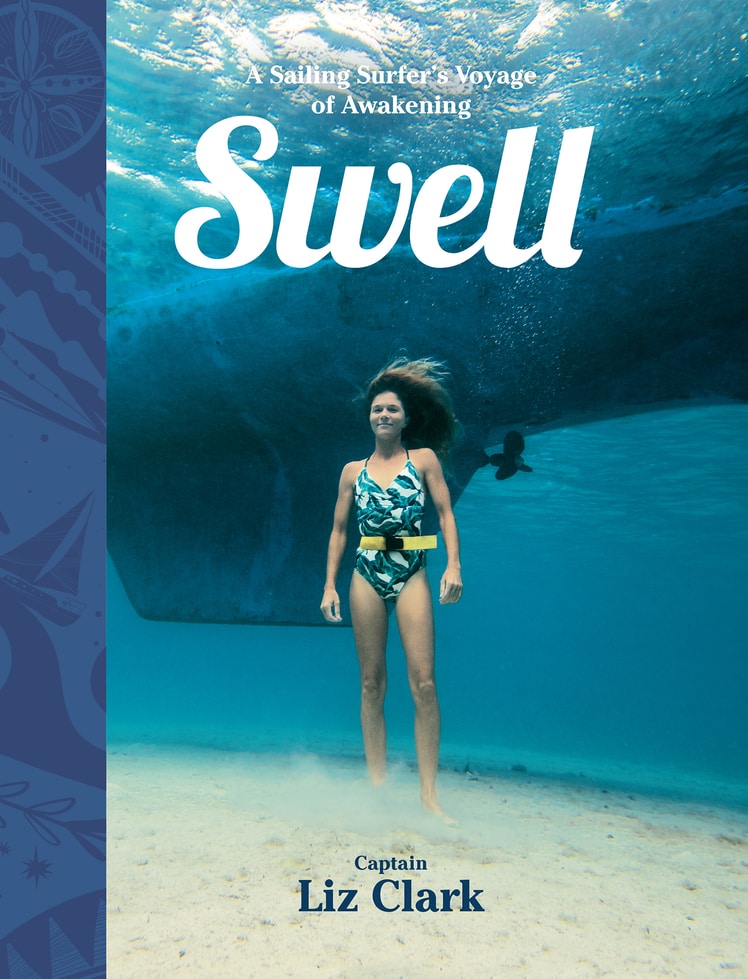The Mighty, Marvelous, and ENDANGERED–> BLUEFIN TUNA
During my years of sea-faring, I’ve caught fish of many sorts. Catching and killing fish has helped me develop a true appreciation and respect for any creature that gives its life to nourish mine. I always take a moment to thank each fish and vow to do my best to carry its energy forward positively. I admire its form, marveling at each unique feature and speculating on how each help it succeed in its underwater life drama.
Each time I look over a tuna’s body, I’m struck dumb by their beauty and astonished by the details of their hydro-dynamically extraordinary design—the sleek torpedo shape, smooth & scale-less skin, perfectly flush eyes, a dorsal fin that actually retracts into a slit in its back! The deep purples on his back fade into silvery iridescent sides and then a pearly white belly. And synchronized oscillating ‘finlets’ protrude from the top and bottom of its rear half.
I often catch Bigeye or Yellowfin, but in all my thousands of miles of trolling behind Swell, I’ve never caught a Bluefin tuna. That’s likely a combination of my mediocre fishing skills and their endangered species status. I did see a few of them outside of a pass in the Line Islands while freediving once…As I floated on the surface, their powerful droplet shapes coasted past with stiff pumps of their crescent-shaped tails. They carried a weighty sense of purpose, sharp and wide-eyed, as if constantly poised to react quicker then their next meal…
I later learned that Bluefin tuna are one of the few species of fish considered ‘warm-blooded’ due to the way they can increase their body temperature beyond that of the surrounding waters by transferring body heat to their muscles similar to a ‘heat exchanger’ in an engine. This evolutionary advantage gives more power and efficiency to their muscles, allowing them to swim at speeds near beyond 50mph, dive more than 3,200 feet, and swim in constant migration ranging into some of the coldest parts of the oceans! Mighty Bluefin! Flawless hunter! Tireless traveler!
A few weeks after that sighting, a Spanish tuna processing ‘mothership’ arrived with its fleet. I was welcomed aboard by the captain and witnessed the ship’s gigantic fish hold, filled with thousands upon thousands of frozen tuna corpses of all kinds. The Republic of Kiribati, poor and unaided by other nations, sadly sells off its fishing rights to foreign fleets for a fraction of the fleets’ profits. What will the locals eat when the tuna don’t return?
Globally, the Pacific, Atlantic, and Southern Bluefin tuna are the most pursued and prized tuna for eating. In January of 2012, a 593-lb Bluefin sold for $736,000 to a Japanese sushi restaurant!?! Its ridiculously high value in the Japanese sashimi market motivates hi-tech, grossly specialized overfishing. Bluefin tuna populations are near extinction, but protecting this species has not received international cooperation, likely due to its market value and the complexities of regulating the catch and fishing grounds of a fish that travels to nearly all corners of the oceans.
We can support the Bluefin tuna’s right to existence by not eating this fish! The $25 billion dollar illegal fishing industry will only lose its wind when demand slackens…At sushi restaurants Bluefin is commonly called ‘Maguro’ or ‘Toro’. All over the world, our oceans are over-fished. Not only the Bluefin is at risk of extinction. If we want our grandchildren to be able to eat seafood, we need to get informed before we make our next order at the fish counter or in a restaurant. I eat mainly vegetarian now, with the occasional exception of select seafood. A great way to make sustainable seafood choices is to download the free App for smartphones called ‘Seafood Watch’ or check out their website! Awareness is our ally in the fight to save our oceans!!
Get underwater with the bluefin yourself here: http://www.youtube.com/watch?v=r1m6IKiO26c&feature=related
EDF safe & responsible fisheries:http://apps.edf.org/page.cfm?tagID=1521
Learn about the Seafood Watch App:
http://www.montereybayaquarium.org/cr/seafoodwatch/web/sfw_iphone.aspx
More:
http://www.nrdc.org/oceans/seafoodguide/
http://blueocean.org/seafoods/
http://www.seafoodchoices.com/home.php
http://www.forbes.com/sites/lindseyhoshaw/2011/10/25/top-3-sustainable-seafood-apps/
The Black Fish–A growing movement for the oceans — A conservation group fighting for Bluefin populations









6 Comments
Otis
February 20, 2013Great article – always made me sad to see how a fish lost its vibrant colors after hauling aboard
Cut way back in my fish intake after hearing Dr Sylvia Earle talk about Tuna
Cheers
Captain lizzy
February 20, 2013Otis, I agree. It makes me so sad to watch their colors fade away, too. I’m sure i’m crying in that photo with the mahi mahi! It’s interesting how i went from needing to prove I could be a fisherwoman, to feeling so compassionate for each fish that I can hardly bear to kill them. I’m on my way to becoming an educated vegetarian. It’s just a matter of bringing some supplemental protein products along on board Swell…:) thanks for your efforts to preserve our fisheries. Dr. Earle is a hero!
Christopher Maglio
February 20, 2013Maybe Patrick will chance upon this. Solid research, good job Liz….. I wish it was possible to find an audience with those who have the regulatory power to internationally curb the level of harvesting. The sea has a tremendous power to heal, but only so much…..
James
February 21, 2013The macro perspective must be considered too. There is a trend of creating over stretched marine protected areas (US, Australia, NZ) near shore within sustainable fisheries. ie. Nearly all of California reefs are now closed to fishing. When you close sustainable fisheries to get an environmental warm and fuzzy, the fishing pressure (supply) moves out of sight into unregulated fisheries where commercial abuses run rampant as in Mexico with Dorado/lobster and international waters with BFT, whales, etc. We shoot ourselves in the global fishery foot by not accepting the reality of responsible recreation and commercial take in healthy fisheries. Yes, we can NOT eat BFT to curb demand. However, pushing for access to our own healthy fisheries will help return sustainable food to our dinner table.
Callum Pragnell
February 26, 2013Great article, very interesting. It is sad to see a fish lose its colour after being hauled aboard, i’m glad someone else agrees! Needs must though, eh.
The Mighty, Marvelous, and endagered – Bluefin Tuna | eauemi
May 7, 2013[…] The Mighty, Marvelous, and endagered – Bluefin Tuna […]